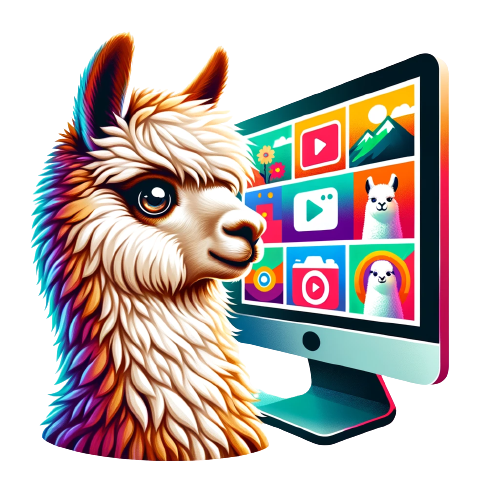💡 I also have other video-language projects that may interest you ✨.
MoE-LLaVA: Mixture of Experts for Large Vision-Language Models
Bin Lin, Zhenyu Tang, Yang Ye, Jiaxi Cui, Bin Zhu, Peng Jin, Junwu Zhang, Munan Ning, Li Yuan



LanguageBind: Extending Video-Language Pretraining to N-modality by Language-based Semantic Alignment
Bin Zhu, Bin Lin, Munan Ning, Yang Yan, Jiaxi Cui, HongFa Wang, Yatian Pang, Wenhao Jiang, Junwu Zhang, Zongwei Li, Wancai Zhang, Zhifeng Li, Wei Liu, Li Yuan



Video-Bench: A Comprehensive Benchmark and Toolkit for Evaluating Video-based Large Language Models
Munan Ning, Bin Zhu, Yujia Xie, Bin Lin, Jiaxi Cui, Lu Yuan, Dongdong Chen, Li Yuan



- [2024.01.27] 👀👀👀 Our MoE-LLaVA is released! A sparse model with 3B parameters outperformed the dense model with 7B parameters.
- [2024.01.17] 🔥🔥🔥 Our LanguageBind has been accepted at ICLR 2024!
- [2024.01.16] 🔥🔥🔥 We reorganize the code and support LoRA fine-tuning, checking finetune_lora.sh.
- [2023.11.30] 🤝 Thanks to the generous contributions of the community, the OpenXLab's demo is now accessible.
- [2023.11.23] We are training a new and powerful model.
- [2023.11.21] 🤝 Check out the replicate demo, created by @nateraw, who has generously supported our research!
- [2023.11.20] 🤗 Hugging Face demo and all codes & datasets are available now! Welcome to watch 👀 this repository for the latest updates.
Video-LLaVA exhibits remarkable interactive capabilities between images and videos, despite the absence of image-video pairs in the dataset.
- With the binding of unified visual representations to the language feature space, we enable an LLM to perform visual reasoning capabilities on both images and videos simultaneously.
- Extensive experiments demonstrate the complementarity of modalities, showcasing significant superiority when compared to models specifically designed for either images or videos.
Highly recommend trying out our web demo by the following command, which incorporates all features currently supported by Video-LLaVA. We also provide online demo in Huggingface Spaces.
python -m videollava.serve.gradio_web_serverdemo.mp4
CUDA_VISIBLE_DEVICES=0 python -m videollava.serve.cli --model-path "LanguageBind/Video-LLaVA-7B" --file "path/to/your/video.mp4" --load-4bitCUDA_VISIBLE_DEVICES=0 python -m videollava.serve.cli --model-path "LanguageBind/Video-LLaVA-7B" --file "path/to/your/image.jpg" --load-4bit- Python >= 3.10
- Pytorch == 2.0.1
- CUDA Version >= 11.7
- Install required packages:
git clone https://github.com/PKU-YuanGroup/Video-LLaVA
cd Video-LLaVA
conda create -n videollava python=3.10 -y
conda activate videollava
pip install --upgrade pip # enable PEP 660 support
pip install -e .
pip install -e ".[train]"
pip install flash-attn --no-build-isolation
pip install decord opencv-python git+https://github.com/facebookresearch/pytorchvideo.git@28fe037d212663c6a24f373b94cc5d478c8c1a1dWe open source all codes. If you want to load the model (e.g. LanguageBind/Video-LLaVA-7B) on local, you can use the following code snippets.
import torch
from videollava.constants import IMAGE_TOKEN_INDEX, DEFAULT_IMAGE_TOKEN
from videollava.conversation import conv_templates, SeparatorStyle
from videollava.model.builder import load_pretrained_model
from videollava.utils import disable_torch_init
from videollava.mm_utils import tokenizer_image_token, get_model_name_from_path, KeywordsStoppingCriteria
def main():
disable_torch_init()
image = 'videollava/serve/examples/extreme_ironing.jpg'
inp = 'What is unusual about this image?'
model_path = 'LanguageBind/Video-LLaVA-7B'
cache_dir = 'cache_dir'
device = 'cuda'
load_4bit, load_8bit = True, False
model_name = get_model_name_from_path(model_path)
tokenizer, model, processor, _ = load_pretrained_model(model_path, None, model_name, load_8bit, load_4bit, device=device, cache_dir=cache_dir)
image_processor = processor['image']
conv_mode = "llava_v1"
conv = conv_templates[conv_mode].copy()
roles = conv.roles
image_tensor = image_processor.preprocess(image, return_tensors='pt')['pixel_values']
if type(image_tensor) is list:
tensor = [image.to(model.device, dtype=torch.float16) for image in image_tensor]
else:
tensor = image_tensor.to(model.device, dtype=torch.float16)
print(f"{roles[1]}: {inp}")
inp = DEFAULT_IMAGE_TOKEN + '\n' + inp
conv.append_message(conv.roles[0], inp)
conv.append_message(conv.roles[1], None)
prompt = conv.get_prompt()
input_ids = tokenizer_image_token(prompt, tokenizer, IMAGE_TOKEN_INDEX, return_tensors='pt').unsqueeze(0).cuda()
stop_str = conv.sep if conv.sep_style != SeparatorStyle.TWO else conv.sep2
keywords = [stop_str]
stopping_criteria = KeywordsStoppingCriteria(keywords, tokenizer, input_ids)
with torch.inference_mode():
output_ids = model.generate(
input_ids,
images=tensor,
do_sample=True,
temperature=0.2,
max_new_tokens=1024,
use_cache=True,
stopping_criteria=[stopping_criteria])
outputs = tokenizer.decode(output_ids[0, input_ids.shape[1]:]).strip()
print(outputs)
if __name__ == '__main__':
main()import torch
from videollava.constants import IMAGE_TOKEN_INDEX, DEFAULT_IMAGE_TOKEN
from videollava.conversation import conv_templates, SeparatorStyle
from videollava.model.builder import load_pretrained_model
from videollava.utils import disable_torch_init
from videollava.mm_utils import tokenizer_image_token, get_model_name_from_path, KeywordsStoppingCriteria
def main():
disable_torch_init()
video = 'videollava/serve/examples/sample_demo_1.mp4'
inp = 'Why is this video funny?'
model_path = 'LanguageBind/Video-LLaVA-7B'
cache_dir = 'cache_dir'
device = 'cuda'
load_4bit, load_8bit = True, False
model_name = get_model_name_from_path(model_path)
tokenizer, model, processor, _ = load_pretrained_model(model_path, None, model_name, load_8bit, load_4bit, device=device, cache_dir=cache_dir)
video_processor = processor['video']
conv_mode = "llava_v1"
conv = conv_templates[conv_mode].copy()
roles = conv.roles
video_tensor = video_processor(video, return_tensors='pt')['pixel_values']
if type(video_tensor) is list:
tensor = [video.to(model.device, dtype=torch.float16) for video in video_tensor]
else:
tensor = video_tensor.to(model.device, dtype=torch.float16)
print(f"{roles[1]}: {inp}")
inp = ' '.join([DEFAULT_IMAGE_TOKEN] * model.get_video_tower().config.num_frames) + '\n' + inp
conv.append_message(conv.roles[0], inp)
conv.append_message(conv.roles[1], None)
prompt = conv.get_prompt()
input_ids = tokenizer_image_token(prompt, tokenizer, IMAGE_TOKEN_INDEX, return_tensors='pt').unsqueeze(0).cuda()
stop_str = conv.sep if conv.sep_style != SeparatorStyle.TWO else conv.sep2
keywords = [stop_str]
stopping_criteria = KeywordsStoppingCriteria(keywords, tokenizer, input_ids)
with torch.inference_mode():
output_ids = model.generate(
input_ids,
images=tensor,
do_sample=True,
temperature=0.1,
max_new_tokens=1024,
use_cache=True,
stopping_criteria=[stopping_criteria])
outputs = tokenizer.decode(output_ids[0, input_ids.shape[1]:]).strip()
print(outputs)
if __name__ == '__main__':
main()The training & validating instruction is in TRAIN_AND_VALIDATE.md.
- LLaVA The codebase we built upon and it is an efficient large language and vision assistant.
- Video-ChatGPT Great job contributing the evaluation code and dataset.
- LanguageBind An open source five modalities language-based retrieval framework.
- Chat-UniVi This framework empowers the model to efficiently utilize a limited number of visual tokens.
- The majority of this project is released under the Apache 2.0 license as found in the LICENSE file.
- The service is a research preview intended for non-commercial use only, subject to the model License of LLaMA, Terms of Use of the data generated by OpenAI, and Privacy Practices of ShareGPT. Please contact us if you find any potential violation.
If you find our paper and code useful in your research, please consider giving a star ⭐ and citation 📝.
@article{lin2023video,
title={Video-LLaVA: Learning United Visual Representation by Alignment Before Projection},
author={Lin, Bin and Zhu, Bin and Ye, Yang and Ning, Munan and Jin, Peng and Yuan, Li},
journal={arXiv preprint arXiv:2311.10122},
year={2023}
}@article{zhu2023languagebind,
title={LanguageBind: Extending Video-Language Pretraining to N-modality by Language-based Semantic Alignment},
author={Zhu, Bin and Lin, Bin and Ning, Munan and Yan, Yang and Cui, Jiaxi and Wang, HongFa and Pang, Yatian and Jiang, Wenhao and Zhang, Junwu and Li, Zongwei and others},
journal={arXiv preprint arXiv:2310.01852},
year={2023}
}




























